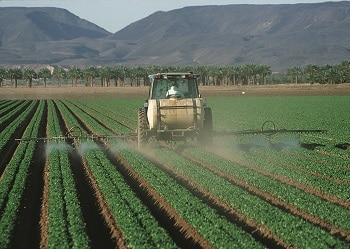The assets and materials of a corporation enable its production and supply it with marketable products or services. Differentiating a company’s assets into categories such as capital or operational resources allows experts to assess which resources contribute to the essential activities of their company and where they should consider spending additional capital. If you want a more in-depth understanding of your company’s operations, learning more about capital resources may be advantageous. We’ll look at the definition, types, and examples of capital and human resources economics in this post.
Capital Resources Definition
By definition, the term “capital resources” is an economic notion that refers to man-made elements used to manufacture goods or services. They are resources that enable the company to continue its production operations.
Understanding the Definition of “Capital Resources”
When was the last time you went shopping? Remember all the stores, each having merchandise for sale? Products for sale range from charming trinkets to substantial pieces of furniture, kitchen appliances to traditional blue denim. It’s limitless! And, consider this: each of those items was manufactured.
Of course, some pieces are handmade and unique. However, for those things that are one of many created on a huge scale by a business, a lot of resources are spent to deliver these items to our stores. Manpower, raw materials, time, and the emphasis of these lesson-capital resources are all resources that fluctuate as much as the items themselves.
So, what exactly are capital resources, and how do they differ from the other components included in the manufacturing process? Man-made capital resources are equipment, machines, or sites employed in the production of goods. Capital resources can be an asset, tool, piece of equipment, or housing facility that a corporation uses over time.
Related Articles:
Raw materials, on the other hand, are substances or materials utilized in the initial phase of a manufacturing process. They are frequently purchased in bulk and tailored to the precise demands of the individual enterprise. Raw materials, often known as commodities, include wood, metals such as iron, and natural resources such as oil.
To be called a capital resource, resources must possess a few important characteristics. They are:
- be an integral part of the manufacturing process and required for the process to produce a product.
- be utilized over a long length of time. This time range will vary depending on the resource’s life expectancy, although it may not be used only once.
- Must be created by humans.
The equipment and machines utilized in the manufacturing process are excellent examples of capital resources. These products, regardless of the type of item they are used to manufacture, fit all three criteria: they are man-made, necessary to the manufacturing process, and can be used again over a long period.
Types of Capital Resources
The company’s capital resources include a wide range of diverse types. The following are the primary types of capital resources:
Financial Capital: Financial capital is primarily necessary to ensure that the company operates and performs to the company’s requirements. Running finance to cover day-to-day operational costs is one example. Similarly, financial capital refers to the funds required to purchase real estate or machinery.
Human Capital: Human Capital refers to the human resources required to operate machines and other non-human capital resources. Companies are unlikely to succeed without adequate human capital resources.
Man-Made Capital: Man-made capital includes machinery and other equipment required to streamline the company’s production process.
Human Capital Resources Definition
As previously said, human capital resources are people’s talents, habits, and other qualities. In other words, the factors that contribute to the final economic output. Human capital resources include education, training, intelligence, skills, health, and other traits that employers value, such as punctuality and interpersonal skills.
A worker’s communication skills, for example, could be exceptional. After dealing with thousands of customers over the years, the worker’s abilities would have grown, and he or she would have learned new and more effective ways to deal with all types of customers.
Human capital is imperceptible, and its value cannot be evaluated. Nonetheless, it is crucial to the long-term success of a corporation. A person who has never used a computer, for example, is unlikely to be as productive in the workplace as someone who has. In this scenario, computing abilities are classified as human capital. As a result, a corporation may decide to invest in bringing such a worker up to speed on the necessary training.
Because it is difficult to quantify an employee’s talent, competency, or personality, the interview process is critical. It takes into account the employee’s skill set, experience, education, and human capital. In other words, human capital is a measure of a person’s economic worth in a certain profession.
Capital Resources Definition Economics
Capital resources definition in economics as “those durable created goods that are then utilized as productive inputs for further production” of goods and services.
What Does the Definition “Capital Resources” Mean in Economics Terms?
As previously said from the definition, capital resources economics are quite important from the standpoint of the organization.
The economic consequences of capital resources are firmly ingrained based on optimizing the outputs from these assets, so that maximum advantages may be derived from these resources that roughly convert to profit for the company.
From an economic standpoint, it is clear that capital resources are being invested by the company’s owners (or investors) to facilitate activities or output that can provide the desired advantages to them.
In this regard, it is also vital to remember that these capital resources are regarded as the foundation upon which subsequent production inside the organization is carried out.
All capital-related decisions are made based on the viability of the required investment and the returns that can be projected as a result of this investment. The economic viability is determined based on the inherent risk and return that is assumed in this regard.
Characteristics of Capital Resources
Some capital resources are observable, whilst others are not. So, how do you distinguish between what is and isn’t a capital resource? Here are four characteristics of all capital resources that you can use to identify the resources in your firm.
#1. Capital made by people.
Humans, as previously stated in its definition, generate capital resources. There can be no capital resources without humans. As a result, any naturally occurring resource is not an example of a capital resource.
#2. Capital is inactive on its own.
Capital resources are required for any organization’s success. They cannot, however, function on their own. Labor is required for capital resources to be effective. Consider work procedures as an example of intellectual effort.
These procedures are meaningless unless people use them. The same may be said for human capital resources like education and skills. The mere fact that they exist has no effect. To put these abilities to use, human labor is required.
#3. Capital is mobile.
Capital resources, unlike natural resources such as land, are very movable. Whether it’s real resources like machinery or intangible resources like human capital, these resources can move from one location to another. When this happens with human capital, the issue is known as brain drain. Another reason why organizations must try to enhance retention rates. If they do not invest in their intellectual, social, and human capital, businesses risk depleting these resources when people leave.
#4. Capital can lose value.
It appears self-evident that tangible capital assets such as manufacturing plants and buildings decline with time. However, intellectual, social, and human capital are all subject to depreciation.
Effective work methods, for example, can become outmoded or even obsolete as industries grow. If social capital is not maintained, it will deteriorate over time. That is one of the reasons why 39% of executives say that implementing digital collaboration platforms is the most crucial aspect of making remote work sustainable in the long run.
Capital Resources Examples
Here are a few examples of popular capital resources to help you understand what they are and how they work within a business:
#1. Company automobiles
Capital resources include company vehicles such as construction or commuter cars. They fit the criteria for capital resources because they are created by humans, are a necessary component of production, and are frequently used over extended periods. Vehicles are often critical to a company’s operations. A construction business, for example, may utilize big excavators and dump trucks to dig trenches and take away material to establish building foundations.
#2. Manufacturing machinery
When a business creates items, it often uses raw materials and production equipment to help its processes. These are capital resources because enterprises cannot make items without them. Conveyor belts, milling machines, packaging equipment, and computer software are examples of manufacturing equipment. Raw commodities and materials are not capital resources because they are natural resources, even though industrial equipment relies on them to generate products.
#3. Tools
Tools are capital resources for a firm because they help personnel perform their responsibilities properly and sustain efficient production. For example, a construction company may give power and hand tools such as screwdrivers, drills, hammers, and cement mixers to ensure that its staff complete tasks safely and successfully. Companies can also save money on capital resources by investing in high-quality tools that are more efficient or resistant to degradation.
#4. Property
A capital resource is a company’s property, which is where production or business operations take place. A manufacturing company’s storage warehouse and production facility can be considered capital resources, whereas a gardening supplies retailer’s greenhouses and retail storefronts can be considered capital resources. If a company owns its land rather than renting it, it can be a valuable capital resource.
What Are the Components of Capital Resources?
A factor of production known as capital is one that is created for use in the production of other commodities and services. Tools, machinery, and office buildings are a few examples of capital. Natural resources are those that come from the environment and can be exploited to create commodities and services.
What Are the Capital’s Four Determinants?
The resources that make up the foundation of the economy and are used by people to produce products and services are called factors of production. The four categories of factors of production that economists distinguish between are land, labor, capital, and entrepreneurialism.
What Benefits Does the Capital Have?
Access to cash or money is made available to both new and current firms through capital markets. These funds are used by businesses to fund expansions and daily operational expenses. The benefits of capital markets include the development of the economy, the rise of jobs, and technical advancement.
What Role Does Capital Play?
In its most basic sense, capital refers to the percentage of a bank’s assets that are unrelated to any contractual obligation for repayment. Therefore, it is accessible as a safety net in the event that the bank’s assets lose value or its liabilities increase.
How Does a Business Use Capital?
Companies employ capital to finance the continued production of goods and services in order to generate profit. In order to create value, businesses invest their cash in a variety of different things. The two most typical categories for capital allocation are labor and building expansions.
What Distinguishes Capital from Investments?
Investment is the use of money, whereas capital is a source of money. As a result, capital and investment are not equivalent. Since capital is something to invest in the firm early on. Following that, the utilization of this money can be considered an investment.
CAPITAL RESOURCES FAQs
What are the 5 capital resources?
It is useful to distinguish five types of capital: financial, natural, produced, human, and social. All are stocks with the potential to generate flows of economically valuable outputs. The preservation of all five types of capital is critical to the long-term viability of economic progress.
What is the importance of capital resources?
Capital in economics refers to the assets—physical tools, plants, and equipment—that enable increased job output. More items can be produced and the level of living can be raised by boosting productivity through enhanced capital equipment.
What is the definition of capital resources for kids?
Capital resources are manufactured items that are utilized to produce other things or to provide a service. These resources boost a company’s productivity. Locations, machinery, tools, and any other man-made items utilized to assist a firm in producing a good or providing a service are examples of capital resources.
Is money a capital resource?
Money is not capital in the sense that economists understand capital because it is not a productive resource. While money can be used to purchase capital, capital assets (such as machinery and tools) are utilized to produce goods and services.
Related Articles
- Human Resource Management: Definition and Guide For Small Businesses
- Project Planning: A Guide To Project Planning Techniques
- Resource Management: Definition, Importance, and Planning
- Strategic Human Resource Management: Steps to Strategic Management Process with Examples
- Capital Resources: Types and Examples






